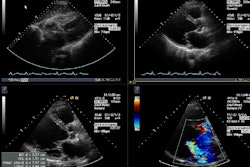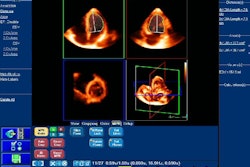AuntMinnie.com presents the latest installment in a series by PACS consultant Michael J. Cannavo, who explores commonly accepted PACS theories and industry secrets your PACS vendor might not want you to know.
More than a decade after it was originally projected, U.S. PACS sales have finally hit the $1 billion mark. While more and more people seem to be jumping on the PACS bandwagon, however, the numbers attached to PACS sales don't tell the whole story.
The oft-repeated quote about "lies, damn lies, and statistics," attributed to everyone from Benjamin Disraeli to Mark Twain, holds true about PACS as well. No one should question that PACS is growing, but using sales volume as a key indicator of market acceptance is probably the worst way to evaluate PACS growth. If anything, PACS system sales volume alone may significantly underestimate the true PACS growth rate.
Nearly 25% of the $1 billion figure can be attributed to replacement systems. Software upgrades and hardware refreshes, which should be counted toward PACS sales, are sometimes included in service contract costs and do not show up in reported sales dollars. More and more facilities are also opting to buy their own system hardware, from servers to workstations, and pay the vendor a nominal software implementation fee. This also allows a good percentage of hardware sales to not be recorded as part of that $1 billion figure.
Software-only sales used to make up 5% of all sales at best, but that figure is now closer to 30%, especially among sales made by the independent vendors. This segment is expected to grow to 50% by 2007, and perhaps as much as 70% by 2010.
While software-only sales have been largely the domain of the independent vendors (and specifically those offering Web-based packages), many of the major PACS vendors have also begun to allow software-only sales in the past year, especially with workstations. Both groups typically request that the vendor performs the software integration and charge a nominal fee to perform this software integration task.
Finally, PACS costs have decreased over the past decade. The hardware component of a PACS sale has decreased from more than 50% of the system cost to 30% to 35% of the total system cost; software contributes 50% of the system cost, with training, installation, and other costs making up the balance. More PACS are being sold, but the dollars shown aren't reflecting this growth as they should.
The move to software-only sales has been driven by a number of factors. While hardware margins previously provided up to 25% of the gross profit margin for PACS vendors, problems associated with the hardware and its implementation often brought the overall net margins down to negligible levels, and in some cases, negative levels. Frankly, it just wasn't worth the aggravation.
That said, though, most of the vendors -- and especially the majors -- still try to hold onto at least the system server and archive manager as part of their semi-integrated solution, if not providing the archive platform itself.
In addition to experiencing consistently low net margins, hardware vendors used by PACS suppliers have raised the bar on service to the point where PACS providers simply can't compete. Hardware vendors charge as little as 2% per year of the net components cost for service.
In contrast, the PACS service provider charges fees ranging from 14% to 24% of the system list price per year. In fairness, only about half that charge (7% to 12%) relates to the system hardware, with the balance used to offset costs associated with remote software diagnostics and, in some cases, system software upgrades as well (system updates are typically provided as no-charge options).
As hardware-related issues typically make up less than 5% of all PACS-related problems, a facility can save 20% to 35% or more on service costs over a three-year return-on-investment (ROI) period.
Perhaps the biggest challenge facing end users is finding a PACS vendor who will provide software-only service options. While many of the independent vendors have offered this service option, including breaking out software upgrades separately, there has been a fair degree of pushback from many of the larger vendors to do this so far. Their reluctance is undoubtedly due to the incredibly high profit margins generated by service contracts.
Component growth has kept pace with PACS growth, with computed radiography (CR) still dramatically outpacing digital radiography (DR) in sales volume. DR's widespread acceptance has remained slow due to the significantly higher prices and limitations on operational functionality compared with CR, but DR is starting to gain wider acceptance where complete room replacements are dictated.
CR's price drops, performance increases, and the addition of low-cost tabletop CR units that can be used in ICUs and outpatient imaging centers still make it the digital modality of choice as a replacement for film.
It has been projected that nearly 60% of all hospitals in the U.S. will have PACS by 2010. Again, depending on which statistics you believe, that would mean nearly doubling the number of current installations in the next four years (excluding replacement systems, which also continue to rise as existing systems age).
Unfortunately, while many hospitals have taken the effort to establish PACS evaluation committees to perform nearly every task from workflow analysis to vendor assessment to contracting, customers still aren't asking many of the right questions prior to the PACS purchase. This has led to PACS that technically work, but don't meet the customer's expectations. With few exceptions, most vendors still take an "Ask me no questions, I'll tell you no lies" approach to PACS sales.
All too many buying decisions are still made without knowing specific details that may adversely impact system performance. Usually it's not until the implementation is complete when performance and/or operational-related issues crop up. And that's when the finger pointing begins.
In fairness to the vendor, they're not solely to blame. Hospitals bear the ultimate responsibility for what gets delivered when they sign the contract. Indeed, the problem is ultimately created long before the contract, going back to when the customer defines (or in some cases, doesn't adequately define) their requirements in their request for proposal (RFP).
The proper RFP
Far too many hospitals continue to rely on templated online solutions to define their PACS requirements instead of outlining their specific requirements in a relatively short, clear, and concise document. Bigger isn't always better with RFPs, yet hospitals still insist on hitting a vendor with a 250-page RFP and giving them 10 days to respond to it. That isn't fair to either party.
Contrary to logic, it really doesn't matter if too much or too little information is given. What consistently seems to still be missing is giving the vendor the right information so they can propose a workable, cost-effective solution. What's even more frustrating is that the worst offenders of the "more is better" school of RFP development are those facilities that are replacing their existing PACS because the system has either reached the end of its useful life or it never worked properly to begin with. They should know better.
While it usually is the CIO or CTO whose name goes on the dotted line on behalf of the hospital, he or she typically has little, if any, involvement in PACS evaluation and the final decision. Typically the CIO attends the kick-off meeting and enters back into the project when final contract negotiations are at hand.
Everything else is basically entrusted to his or her staff members, who must make the right decisions for the organization. It's the same for C-level executives such as the CEO, CFO, and others; they generally oversee the project from the 10,000-foot level, addressing their respective areas and become involved in the project only as needed.
What's fascinating about this is that so many PACS companies still insist on focusing on the C-level executives, even though they have very little to do with the final PACS decision. While the C-level executives do retain veto power over the PACS evaluation team's decision, it's exceptionally rare for that power to be invoked.
Typically vetoes occur only when the organization believes it is not in its best interests to go with the vendor chosen by the team. Usually the team is aware of the preference of the C-suite executives prior to the initiation of the selection process, and incorporates this preference into its overall decision-making weight factor.
PACS decisions still remain pretty much the domain of radiology, although there is a trend in recent years to give more weight to the information technology (IT) department. Since most systems being installed now can be considered radiology-centric, radiology controls about 70% of the decision-making process, IT about 20%, and the remaining 10% divided among purchasing, hospital administration, and others.
In the next several years, radiology's decision power will decrease somewhat as systems become more integrated with other clinical systems and viewed more as an enterprise-wide solution, with radiology and IT having equal shares in the decision-making process by 2010.
Marketing issues
PACS marketing remains challenging, with very few companies differentiating their products from their competitors'. Global PACS marketing (GPM) seems to be the approach used by many companies. Unfortunately the millions spent in PACS marketing seem to largely miss the mark, promoting PACS technology versus the particular vendor's product advantages.
The problem seems to be multifaceted. Many vendors still don't understand the benefits their products offer in relation to what the marketplace needs. Those who do understand their benefits typically prioritize them backward, with "me-too" features being made the primary focus of the company's efforts. The features that make companies stand apart from their competitors never make it to the forefront of their campaigns.
As amazing as it seems, a few vendors still don't even understand the market's needs, let alone their own products and services. Compounding this are facilities that either don't understand or haven't articulated their own requirements properly to the vendors, although this problem appears to be diminishing.
Marketing, and the response to it, really hasn't changed very much since the mid-1990s. Often decisions on potential vendors are based largely on relationships, not necessarily what is shown in ads and who shows what at a trade show. What still seems to be missing is a closer look at how the product will perform in a clinical setting and, specifically, in a clinical setting similar to that of the customer's.
There also seems to be a change in the way PACS consultants are being used. Much of the business we have seen in the past year has dealt with facilities that have done their own internal assessments and made their vendor decision; they just want to make sure they haven't left anything out before they sign on the dotted line.
In most cases the proposed solutions will do the job. What we continue to find, though, are systems that are still overengineered (it's very rare to find a system that has been underengineered unless inadequate data has been provided by the customer), have inadequate disaster recovery plans, haven't addressed future scenarios like data migration, or have both quotations that are vague and contracts that are so blatantly one-sided that they can hardly be considered fair.
After many years of protestations, most (but still not all) vendors will provide line-item pricing, although bundling is still done (no breakouts shown for individual hardware and software components). What's worse, installation and training aren't done on a case-by-case basis but, for the most part, are still determined as a percentage of the system sale and are bundled with no details provided unless you ask.
Quotations should spell out exactly what the customer is getting -- no more, no less -- and match the system design and customer's needs. The cookie-cutter approach just doesn't work.
Contracts have always been a pet peeve, with most still focusing on the hardware and software delivery versus system operations and functionality. Even worse, very few of the major vendors will allow anything more than minor modifications to them, so the customer is basically stuck with a "you bought it, you own it" contract, making the term "caveat emptor" more than just a couple of Latin words.
Because of this increased flexibility, PACS is becoming much more competitive and affordable. Customers are becoming savvier at knowing the questions to ask to determine if the vendor has the right solution for them (although they still have a long way to go), and vendors are bringing out the right products to do the job.
Few facilities need to be sold on PACS anymore. Instead, these customers are looking for differentiators between what seems to be a plethora of me-too products. The various systems seemingly provide increased functionality with greater choices of implementation options: fully integrated, semi-integrated (servers, archives, and interfaces provided), or a complete software-only offering. Now if we could only figure out what makes one PACS different from the rest.
By Michael J. Cannavo
AuntMinnie.com contributing writer
October 10, 2005
Michael J. Cannavo is a leading PACS consultant and has authored nearly 300 articles on PACS technology in the past 15 years. He can be reached via e-mail at [email protected].
Cannavo's direct, straightforward approach may have caused him to lose the race for this year's Dale Carnegie "How to Win Friends and Influence People" award, but he hopes that this series has shown PACS in a different light, and provided him with a modicum of respect for honesty and integrity in an industry where these values seem to have become a rare commodity.
The comments and observations expressed herein do not necessarily reflect the opinions of AuntMinnie.com, nor should they be construed as an endorsement or admonishment of any particular vendor, analyst, industry consultant, or consulting group. Rather, they should be taken as the personal observations of a guy who has, by his own account, been in this industry way too long.
Related Reading
Part V: Exploring PACS Secrets -- Buyers and Sellers, December 16, 2004
The 2004 PACSman Awards, December 1, 2004
Part IV: Exploring PACS secrets -- RSNA edition, November 18, 2004
Part III: Exploring PACS secrets, September 17, 2004
Part II: Exploring PACS secrets, July 6, 2004
Copyright © 2005 AuntMinnie.com



















